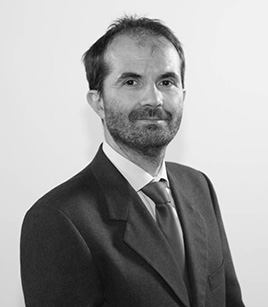Berlin Institute of Technology – Centre Technology and Society, Germany

You have been a member of T²M for quite some time, how did you come to the transport and mobility studies?
Well, I think this is serendipity. I wrote my master thesis on the economic role of public work in Italy after 1929 great depression, and how a dictatorship, as Italian fascism, used those public works to enhance its power. Transport infrastructure had the lion share in those activities, and I recognized that history of transport is a crossover topic, affecting public perception and economic cycles, everyday life and people expectations. So I got involved in this topic more and more.
What are your fields of interest in transport and mobility?
Being curious by nature, I would not put boundaries. But, surely I worked extensively on 1920s Italian ground-breaking motorway construction, as well as in historical turning points for transport infrastructures, alike second half of XVIII century and 1960s mass motorization. Indeed analysing turning points are fascinating, because such a research force you to investigate the predecessors and the historical mainstream, eventually to the point to criticize the main narrative.
How do you describe the mobility in Italy and in Germany? What’s different? What’s similar?
At a macro level, it seems to me that those two countries have very similar patterns, as well as, on average, a – mostly-male – obsession for motor vehicles. However, the public transport in German offers definitely a better service, which in my eyes is the outcome of a different social compromise.
What would you expect of the T²M association in the next years?
T²M is doing, and has done, an amazing work, giving evidence to a sub-filed, as history of transport, which was hidden behind other labels. And T²M is a market place where to discuss and enhance our knowledge on the issue; the success and the vibrant atmosphere at the annual conferences is the best proof of this.
I was thinking about the high turnover of participants at our conferences. It is well known among sociologists of organizations that this revolving door routine fill the meetings of free raiders and capture only a few new members. But, looking this from a different prospective, our annual meeting are populated by very inspiring papers presented by scholars with very different backgrounds. The lowest common denominators are history and mobility. So, why not to push this further? Why not to challenge openly our historical mainstream and learn from other discipline? And, vice versa, suggest very proudly (and humbly) that history matters.
Currently you are working on the future of transport. How is this feasible for an historian?
I am very confident of my historical background to the point to challenge it, being involved in other fields. Actually, to a closer look, there are a lot of common points between history and future. Both work on time scale. Both are high speculative. As Benedetto Croce – an Italian philosopher – wrote that history is always involving contemporary issues, in the meaning that more or less consciously we wrote about the past in order to debate current issue. And, in point of fact, future is doing the same, forecasting the future in order to drive the present. Let me add, as a final point, the future studies very often relies on historical trends, although this not always done, in my eyes, in a accurate way: I see there many occupation assets and a lot of fun for us historians!
November 2013